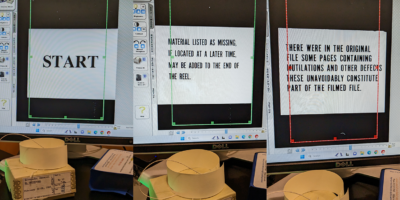By Jenn Polish
Throughout this series, I’ve argued that anti-ableist practices in our classrooms should begin before the first day of term: before we’ve met our students, before students are forced to either “out” themselves as having dis/abilities, so that we can minimally “accommodate” them, or remain silent and locked out of learning.
My last post took us to syllabus design and the notion that accessibility needs to be featured, not sidelined, in our course documents and first-day encounters with our students But the question remains: what then? What happens after we lay out anti-ableist principles in our syllabus? What happens to our assignments if we are truly committed to opening our classrooms to as many types of learners as possible? How can this student-centered, accessible model also be made accessible to professors—that is, how does it “accommodate” the labor required to scaffold, guide, and grade such projects?
We need assignments, I would argue, that are both open enough and specific enough to welcome students of as many different learning styles and emotional capacities as possible. Many students benefit from having the latitude to pick their own project topics or even formats; others (for example, students on the autism spectrum and/or students with anxiety dis/orders) may learn better when given more concrete instructions, so that they know exactly what is expected of them.
How do we strike that balance between freedom and constraint, then? Between giving students the independence to pursue what inspires them and learn in the way they need to, while also meeting particular learning goals, such that students feel guided and supported?
Part of this comes with scaffolding assignments: building into each assignment a sequential series of dates on which tasks will be due. This can provide the structure and specificity required by those of us with autism and/or anxiety (for example), while allowing those of with depression and/or mood dis/orders (for example) to self-design the types of projects that are going to soothe us most at a given moment.
While there my style of giving assignments is far from perfect—in fact, it’s an area in which I feel I can improve an instructor—I’d like to offer my course at LaGuardia Community College this term as an example, here. By providing students with many options, while also scaffolding each into a series of guided, very achievable pieces, these high-stakes assignments can be exactly as low-stakes at any given moment as any given student might need it to be.
Further, encouraging (and even requiring) students to actively interact with each assignment in multiple media can be very helpful. Providing students with access to the assignment in Google docs so they can comment directly on the components they have questions about, are excited about, or would like to change, as well as a digital copy on the blog and a hard copy, allows students to engage with the same material in multiple modes, and in whatever way works best—on their phones, on paper with pens, through text-to-speech software, zoom functions, etc. This necessarily redundant form of multimodality enables students to come to each assignment through various entry points, as well as to assert their agency in providing immediate feedback on the assignment, which can only serve to make everyone’s work, including your own, better.
Before putting assignments out there for student feedback, however, we need to generate them. My own approach is to ask myself a series of questions with each assignment I create (I do this for syllabi and lesson plans and assessment strategies, as well). Though this list of guiding questions— an anti-ableist assignment design litmus test, if you will!— is necessarily incomplete, it can be a good starting point to ensure that anti-ableist praxis is part of your assignment design process.
Some Questions to Ask Ourselves When Designing Assignments
- What types of learning styles and needs am I welcoming here? Which am I excluding? How can I open up this assignment to welcome more ways of learning and engaging?
- What are my goals here? Why do I have these goals? Which students might have or need different goals, or need to get there in a different way than the one I’m proscribing?
- Is this assignment inviting or excluding for students with extreme anxiety? With depression? With difficulty focusing? With PTSD? With varying ranges of social needs and comforts?
- For literature and psychology classes: Am I casually using words like “mad” to mean “crazy” (this happens in every Hamlet assignment ever assigned) and encouraging uncritically ableist readings of texts through my guiding assignment questions?
Jennifer Polish is a doctoral candidate in English at the Graduate Center and a Humanities Alliance Teaching Fellow. This is the third in a series of posts they are contributing to Visible Pedagogy on “Anti-Ableist Pedagogies.”









Leave a Reply